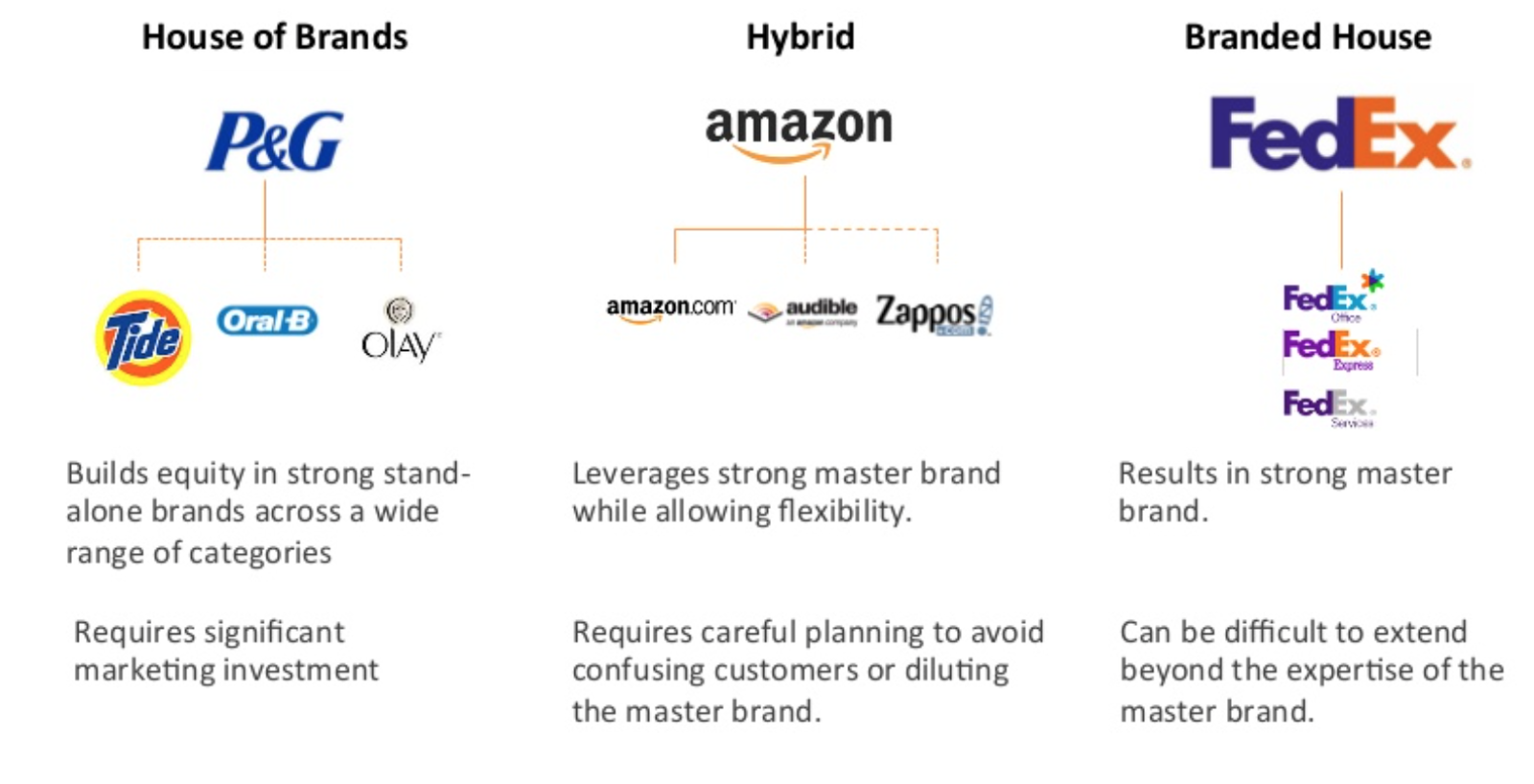Brand Hierachy:
Important Aspects to Help Multiple Brands-Organizations Navigate Customer Confusion
Let's face it, most organizations aim to have superior and unique brands like Apple or Starbucks.
As a result, companies hugely invest in current trends of marketing, including Snapchat and Instagram to promote their brand.
Even so, these tactics often lead to a brand existential crisis since consumers fail to distinguish between the products and services offered by a particular brand.
Hence, you need a brand hierarchy to communicate to your customer base the essential brand elements and the different features in your product and product categories.
The question is: How do create a unique brand and ensure your consumers are aware of all your sub-products?
Let's explore aspects you need to consider when developing a brand hierarchy.
What is Brand Hierarchy?
A brand hierarchy refers to a representation of a company's branding strategy.
It helps the company portray the nature and number of unique brand elements present in all their products--- while highlighting their specific ordering.
Brand hierarchy is important if your company has diverse product lines or plans to diversify. It will help you identify your products and services; by facilitating the identification of significant brand elements and alterations in the products.
The need for brand hierarchy stems from the realization that products can be categorized diversely --- depending on the number of brand features used and the ways they are combined.
Hence, a brand hierarchy will help your company establish how various products are interconnected since some brand features are shared in more than one brand.
In contrast, some brand elements only occur in particular products.
More often than not, companies fail to prioritize the concept of brand hierarchy. This guide emphasizes the need to focus on a brand hierarchy as you diversify your product lines!
How to Create a Brand Hierarchy?
Is your company looking to engage in multiple product lines? If so, it is fundamental to create a brand hierarchy to avoid future restructuring costs.
By creating a brand hierarchy, your company can better manage its different products, and you make it easy for your customers to understand your products.
Here are simple steps that will help you build your brand hierarchy:
Identify Your Product Groups
It is fundamental for you to identify the products and services your brand offer – Can the products be divided into diverse categories?
To achieve this goal, you should first analyze your present brand structure, analyzing the elements that are confusing in your product range.
This step requires you to answer the question: Are stakeholders confused about what you sell?
For example, FedEx deals with different services: Freight, Express, and Supply Chain Service, but they all fall under the brand FedEx.

Determine Your Levels
After establishing the product categories, the next step is to determine the levels you will divide your products.
To effectively determine the levels, you need to follow the following principle:
Principle of Clarity
Ensure your brand hierarchy is clear; if you have different but closely related products, minimize your levels.
For instance, Starbucks offers different products that are close, including coffee, tea, and mineral water. Therefore, they stick to only two levels to avoid confusing their consumers.
Principle of Commonality
Isn’t it impressive when brands use a certain letter to identify their products? You should use a common letter to show your product and to ensure your customers associate with your product.
For example, Consumers identify McDonald's using the letter “M”
The Types of Brand Hierarchy

The Branded House
This type of hierarchy applies to a corporation that uses a single voice or image to market. Therefore, they use all their resources to develop and maintain the status of one entity.
For Instance, “Samsung does offer TVs, sound systems, and conditioners to the same audience--- individuals that like to buy from an established brand and love quality electronics. Thus, they can place all their products as a single brand.
The primary advantage of this type of hierarchy is that it exploits investment in one brand.
However, this hierarchy can confuse looking for a wide range of products or services.
Hybrid Branding (or Endorser Branding)
Hybrid branding is primarily used by firms that look to expand through acquisition. For that reason, you can use this type of branding if you want to reach a wider audience and ensure that customers recognize both brands.
Ergo, this type of branding is also referred to as "endorser branding”,; as an established brand is used to endorse another.
This type of branding is effective since it enables a company to highlight a brand's focus without foregoing the status of the parent company.
For example, Marriot uses hybrid branding, leveraging its established brand in the hospitality industry to market its subsidiaries, including Courtyard by Marriot and JW Marriot.
House of Brands (Or Family of Brands)
Unlike endorser branding, this type of branding maintains each brand's identity and persona.
When using this type of branding, it is important to note that consumers perceive all the brands associated with your parent company as separate entities Consequently, the credibility or bad traits of the parent company are not passed on to the subsidiary.
For example, the case of P&G is the parent company of brands like Vicks, Pampers, and Old Spice.
Accordingly, if any of these brands is irresponsible or untrustworthy, P&G as the brand owner, does not suffer the consequences.
Key Reasons Why You Need to Organize Your Product and Service Brand Hierarchy
Eliminate Customers Confusion
When consumers do not understand the products and services you are offering, they are likely to make price-based decisions or fail to consume what you are offering.
So, a brand hierarchy is a significant tool in your organization!
You can identify customer confusion by looking at your website analytics--- they depict your customers' reactions to particular products and brands. If your consumers spend a considerable amount of time looking at products and brands that are similar without buying them, they are confused.
Each Brand Attracts Attention Appropriately
If your company offers multiple products, the brands are likely to compete with each other. This scenario could lead to product cannibalization, where the new product abrades the cashflows of an already existing product.
So, developing a brand hierarchy establishes a unique brand strategy and story for all brands--- also addresses the ideal target market.
A brand hierarchy helps to create clarity that makes it easy for consumers to choose from the various products and services you are offering.
Cross-Sells and Upsells Are Easier
Consumers enjoy new products since they create options. Similarly, sales professionals enjoy new brands since they increase the opportunity of making sales.
Nonetheless, the lack of a brand hierarchy can make the work of a sales professional complex since they have to deal with many product portfolios.
A good brand hierarchy differentiates between complementary and supplementary products. Other than that, it enables you to understand the needs and expectations of a particular target market.
Conclusion
Developing a brand hierarchy is not an option, rather it is a fundamental aspect for companies offering multiple products.
It acts as a summary of the branding strategy by depicting the number and nature of similar and unique brand elements regarding the company's products and services.
Some people argue that consumers require clarity when purchasing products or services— otherwise they resort to price-based purchasing decisions.
So, create that brand hierarchy to solve the problem of consumer confusion.
References
Stevens, V. (2019). A concept in search of a stronger foundation: Three ideal types of place brand architectures. The Marketing Review, 19(3-4), 279-292.
Zelenskaya, E., & Elkanova, E. (2020). Designing place brand architecture: the potential of a sub-brands strategy. Journal of Product & Brand Management.1.
Subscribe to our email newsletter and unlock access to members-only content and exclusive updates.

Comments